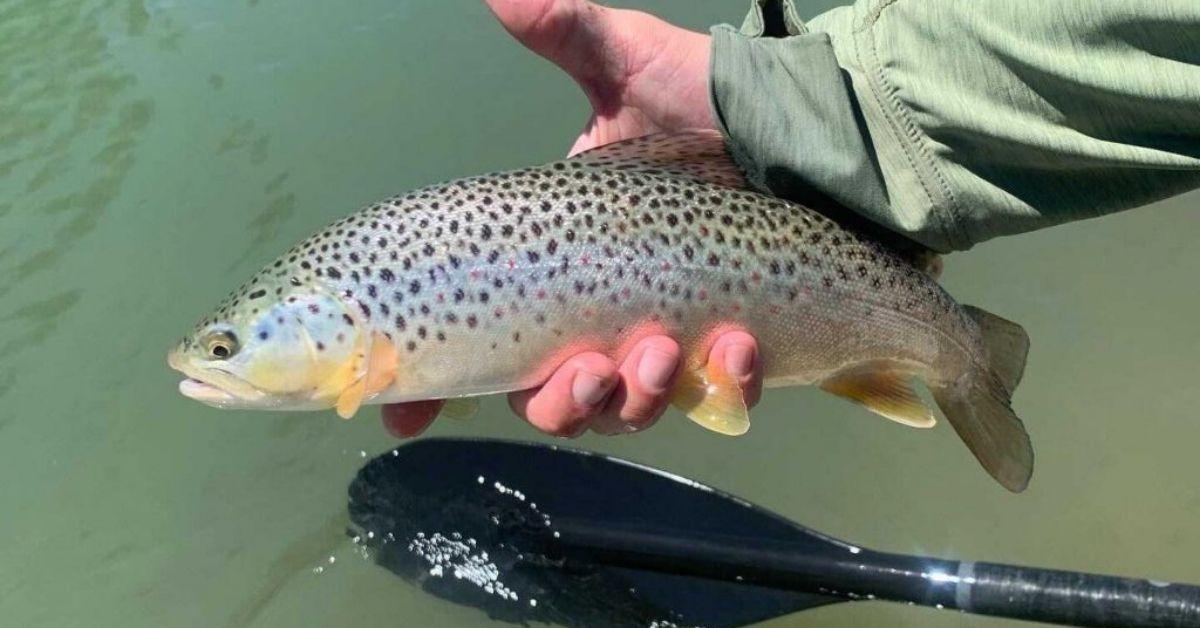Fall Fishing For Trout: 10 Tips You Need To Know
Cool fall weather provides relief for both trout anglers and trout. The summer heat makes it tough for anglers to fish in the middle of the day, but the cooler fall temperatures allow them to enjoy pursuing trout any time of the day. Trout need lots of oxygen and the amount of oxygen water holds decreases the warmer it gets, so when the water warms in the summer trout get sluggish and feed less until the water cools in the fall.
10) Match The Fall Hatch
Insects are a favorite food for trout throughout most of the year, so matching your flies and lures to the most abundant insects in the fall will increase your chances of tricking trout. Insect hatches are fewer in number and the bugs are smaller during autumn. The most abundant insects throughout the fall are blue-winged olive mayflies and midges so fly anglers need to match the hatch by tying on flies ranging from size 18 down to size 24.
9) Bugs Before The Freeze
Land-based bugs such as grasshoppers, ladybugs, beetles, and ants are plentiful in the fall and frequently land in the water. These insects are prime food for trout in early fall until the first hard freeze kills them. Fish your terrestrial bug imitators close to the water’s edge and in eddies of rivers for best results.
8) Look For The Strongest Flow
Water temperatures are still warm and oxygen levels are lower in early fall, so concentrate on areas with the strongest current to find the most active trout. Riffles and eddies are prime spots to try during this time.
7) Tie On Light Line
Lakes and rivers are usually crystal clear in the fall, especially after a dry summer. Trout become line shy in the clear water so you need to scale down to 2- or 4-pound test low-visibility line. I have even resorted to tying a 3/4-pound leader on 2-pound test when jig fishing for fall trout in clear Ozark streams.
6) Stealth Tactics For Clear Water
Trout spook easily in clear-water streams so stealth tactics are a necessity to catch these wary fish. Sneak up on trout by wearing clothing that blends in with your surroundings, wade slowly and cast upstream to prevent spooking fish. Keeping a low profile while fishing from the bank is another stealthy way to trick fall trout.
5) Find Shade
Trout use shade as cover for protection from land predators and birds of prey when the fish are feeding in the shallows. Wading in shady areas also makes it difficult for clear-water trout to detect you.
4) Brown Trout Run
Brown trout begin migrating to their spawning areas in the fall, so key on main channel submerged rocks, undercut banks and deeper pools in early fall and follow the fish toward feeder streams by late fall.
3) Big Baits, Big Fish
Big brown trout get hungry on their spawning run up the rivers so they prefer a big meal in autumn. The October caddis is a big bug that draws big trout to the surface. When the bug’s hatch is in full swing, tie on a caddis pattern in a size 20 dry fly. I like to tempt big browns with a big minnow imitator such as a 4- or 5-inch suspending stickbait on spinning tackle.
2) Serve Eggs
Salmon, steelhead and trout runs in rivers create lots of eggs for resident trout to dine on during the fall. Bumping egg fly patterns or real eggs along the bottom will help you catch lots of river trout.
1) Keep It Moving
Windy fall days make it tough for trout to discern food from debris such as leaves, twigs and nuts falling from trees. Moving lures and flies are easier for trout to detect then. Try twitching a hopper or beetle during a drift with your fly rod or hop marabou jigs and retrieve spinners or spoons at a moderate to fast pace on spinning gear.
Updated November 3rd, 2021 at 5:18 AM CT


